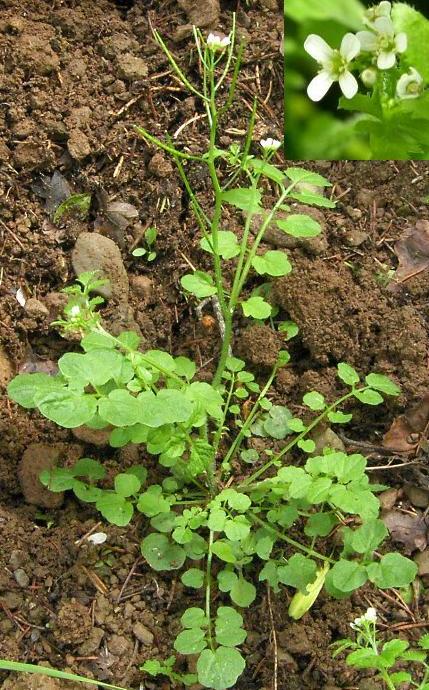Wavy BittercressScientific Name: Cardamine flexuosa |
Commonly found in shady, damp areas.
The leaves grow from a basal rosette and have five roundish leaflets on each side of the stalk with a larger one on the end. Can be eaten and has a similar taste to rocket.
The small, white flowers are on a stem arising from the basal rosette which can be up to 30cm high and slightly wavy. There may be some leaves on the stem which have more elongated leaflets than those on the basal leaves.
Hoe or hand pull before flowering, remove uprooted plants if flowers or seed capsules are
present. Tackle in early spring to prevent problems later. Also when planting remove the top 3 or 4 centimetres of the compost as most garden centre stock have a ready supply of seed, if not the weeds themselves, dwelling on the surface.
Weedkillers to use:-
A residual herbicide should prevent germination on paths.
Paraquat, Diquat contact action gives an immediate knock-down, so it
should not have time to set seed, if caught in time.
The flower stalks and long seed pods are similar to Hairy Bittercress Thale Cress, but the pods on the latter protrude sideways whereas on Bittercress they are more vertical. See also New zealand Bittercress.
Follow these links for further details on Weeds, Weed Removal and Weed Prevention.
